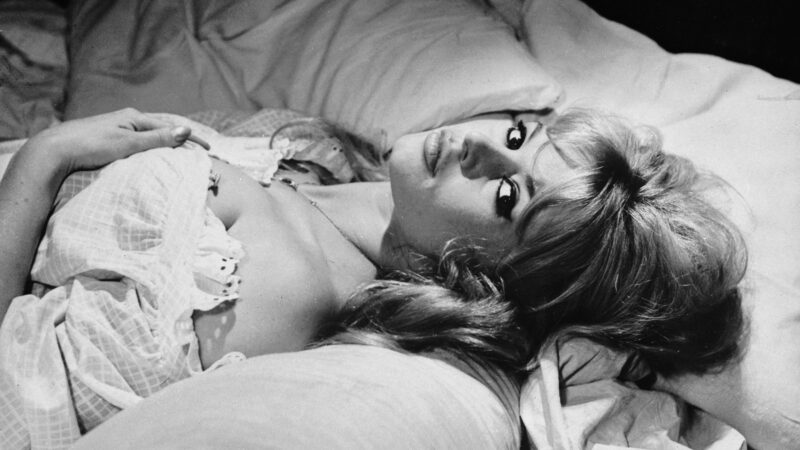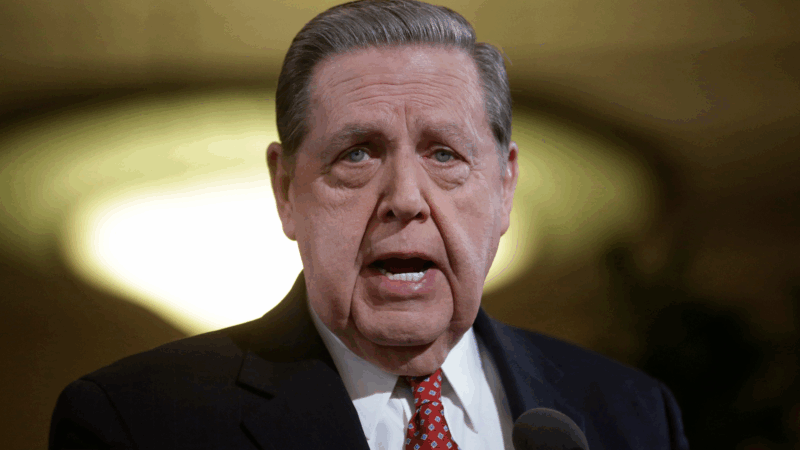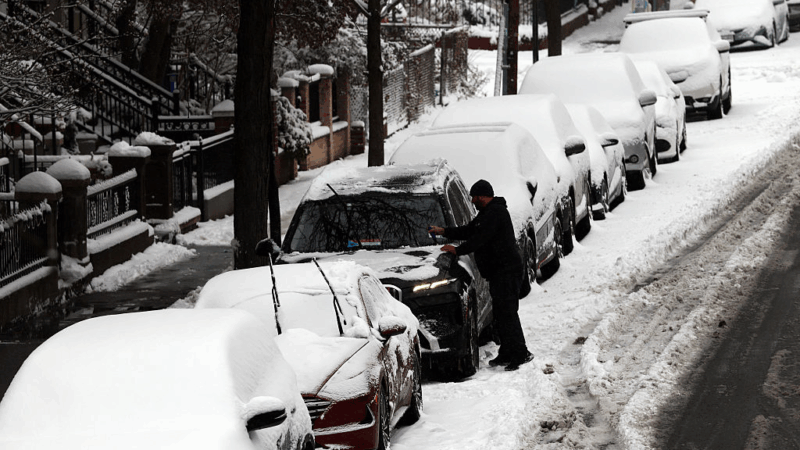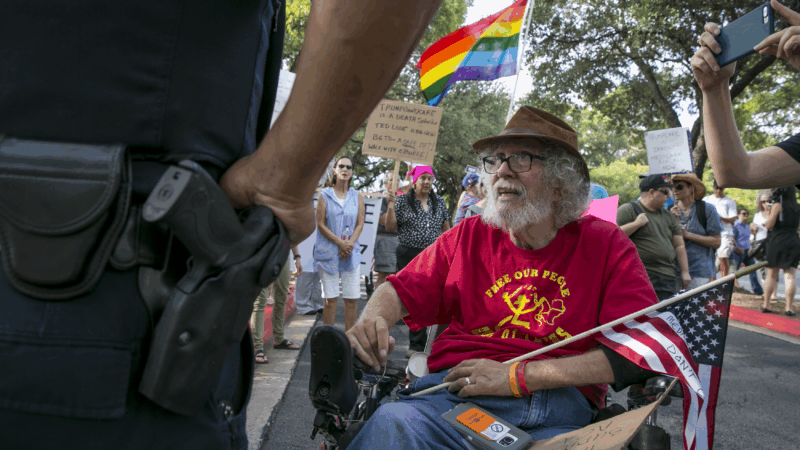How 3 Hawaiian teen princes brought surfing to the mainland
The mouth of the San Lorenzo river in Santa Cruz, Calif., isn’t a great place to surf. Rocks, pollution and swift currents make it precarious almost year-round. But before the construction of a harbor in the mid-1960s altered the surroundings, the spot was a surfer’s paradise, with easy, consistent swells. “They looked very much like the breakers in Honolulu,” said cultural historian and longtime surfer Geoffrey Dunn.
Dunn said this reminder of home is what inspired three teenage members of the Hawaiian royal family, in 1885, to unleash a sport then known as “surfboard swimming” on an unsuspecting American public. “It was a royal sport,” Dunn said. “They were part of that tradition in Honolulu.”
A popular sport with little-known roots
Surfing has grown in popularity in this country in recent years. The Sports & Fitness Industry Association’s (SFIA) 2025 surfing report shows an 8% average annual growth from 2019 to 2024. “Participation in the sport continues to climb, fueled by youthful energy, broader diversity and a growing appetite for outdoor, wellness-driven lifestyles,” said an online statement from the Surf Industry Members Association, quoting the SFIA’s research.
But few Americans know how the sport first came to these shores 140 years ago. A new exhibition at the Santa Cruz Museum of Art and History aims to change that. “ I think it’s important for us to recognize that the seed of surfing in the Americas was the result of these Hawaiians who brought it here,” Dunn said.

Dunn said Hawaii’s royal family sent siblings David Kawānanakoa, Jonah Kūhiō Kalanianaʻole and Edward Keliʻiahonui to study abroad at St. Matthew’s Military School, an elite school in San Mateo County, not far from Santa Cruz, with the aim of preparing them to be worldly and well-informed modern rulers. “As part of the globalization of trade in the 19th century, people came from all over the world to Hawaii,” Dunn said.
From Hawaiian to Californian wood
The brothers had grown up riding the waves atop giant surfboards made out of native Hawaiian woods such as ulu and koa. In California, they fashioned them out of the local redwood. Dunn pointed out gleaming replicas of these artifacts, on display in the exhibition, alongside surfboards illustrating the evolution of the spot throughout history. (The reproductions are based on originals from the estate of one of the princes, which are now housed at the Bishop Museum on Oahu.)

“ They probably weigh eight times more than current surfboards at least,” Dunn said, adding the princes’ boards were twice as long and didn’t have fins to help with stabilization. “So much tougher to surf. But of course, that’s what they had been using in Hawaii.”
A big splash
In California, the royal brothers made a big splash. An article from the July 20, 1885 edition of a local newspaper, the Santa Cruz Surf, told all about it. “The young Hawaiian princes were in the water, enjoying it hugely and giving interesting exhibitions of surfboard swimming as practiced in their native islands,” the article said.
These aquatic feats left a lasting impression on the citizens of Santa Cruz following the princes’ departure, which likely happened in 1887, according to the Santa Cruz Museum of Art and History. Eleven years after they first demonstrated their art, the Santa Cruz Surf noted how it had been picked up by locals. “The boys who go swimming in the surf at Seabright Beach use surfboards to ride the breakers, like the Hawaiians,” a July 23, 1896 notice in the publication stated. (Seabright Beach is a popular beach in Santa Cruz.)
Hawaiian response
The princes’ acts of “surf diplomacy” also resonated with Hawaiians.
“The story about the three princes is a famous story in our culture,” said Brian Keaulana. Keaulana comes from a line of legendary Hawaiian surfers, and is also a producer on Chief of War, the Apple TV+ new drama series about the battle to unite the Hawaiian islands in the 18th century. (The series, which stars Jason Momoa, includes royal Hawaiian characters, but it doesn’t include surfing — though one episode features an epic underwater “shark surfing” scene.)

Keaulana said it wasn’t until the early 20th century the sport truly caught on in the U.S. and beyond, popularized in large part by the Hawaiian swimming champ and surfer Duke Kahanamoku. “Duke spread surfing around the world,” Keaulana said.
He added the Hawaiian princes’ visit to California in the 1880s was an important precursor — one that not only benefitted people on the U.S. mainland, but Hawaiians, too.
“They came back with redwood boards,” Keaulana said, adding that the new technology eventually caught on in Hawaii when redwood became the dominant surfboard material on the islands in the first half of the 20th century. Keaulana added: “ It’s funny how those things get passed on.”
Transcript:
SCOTT SIMON, HOST:
Of course, it’s Labor Day weekend and on this unofficial end of summer, many Americans are headed to a beach. A growing number might be surfing. The sport’s been growing in popularity. It’s almost as popular as BJ Leiderman, who does our theme music. But few Americans know how the sport first came to the U.S. 140 years ago. NPR’s Chloe Veltman has the story.
(SOUNDBITE OF WAVES CRASHING)
CHLOE VELTMAN, BYLINE: The mouth of the San Lorenzo River in Santa Cruz, California, isn’t a great place to surf. Rocks, pollution and swift currents make it precarious almost year-round. But before the construction of a harbor in the mid-1960s altered the surroundings, the spot was a surfer’s paradise. It had easy, consistent swells that looked…
GEOFFREY DUNN: Very much like the breakers in Honolulu.
VELTMAN: This is cultural historian and longtime surfer Geoffrey Dunn. He says this reminder of home is what inspired three teenage members of the Hawaiian royal family in 1885 to unleash a sport, then known as surfboard swimming, on an unsuspecting American public.
DUNN: It was a royal sport. They were part of that tradition in Honolulu.
VELTMAN: Dunn says brothers David Kawananakoa, Jonah Kuhio Kalaniana’ole and Edward Keliiahonui were sent to study abroad at an elite school not far from Santa Cruz to prepare them to be worldly and well-informed modern rulers.
DUNN: As part of the globalization of trade in the 19th century, people came from all over the world to Hawaii.
VELTMAN: The brothers had grown up riding the waves atop giant surfboards made out of native Hawaiian woods, such as ulu and koa. In California, they fashioned them out of the local redwood. Dunn points out gleaming replicas of these artifacts currently on display at the Santa Cruz Museum of Art and History. They are based on boards from the princes’ estate held by the Bishop Museum on Oahu.
DUNN: They probably weigh eight times more than current surfboards, at least.
VELTMAN: They were also twice as long and didn’t have fins to help with stabilization.
DUNN: So much tougher to surf. But, of course, that’s what they had been using in Hawaii.
VELTMAN: In California, the royal brothers made a big splash. An article from the July 20, 1885, edition of the Santa Cruz Surf, read aloud here by a colleague, tells all about it.
UNIDENTIFIED PERSON: (Reading) The young Hawaiian princes were in the water, enjoying it hugely and giving interesting exhibitions of surfboard swimming as practiced in their native islands.
VELTMAN: These aquatic feats left a lasting impression on the citizens of Santa Cruz following the princes’ departure. Eleven years after they first demonstrated their art, the Santa Cruz Surf noted how it had been picked up by locals.
BRIAN KEAULANA: The story about the three princes is a famous story in our culture.
VELTMAN: Brian Keaulana comes from a line of legendary Hawaiian surfers. He says people on the U.S. mainland weren’t the only ones who benefited from the Hawaiian princes’ visit. Hawaiians got something out of it too.
KEAULANA: They came back with redwood boards.
VELTMAN: Keaulana says the new technology caught on in Hawaii. Redwood eventually became the dominant surfboard material on the islands for decades in the 20th century.
Chloe Veltman, NPR News.
(SOUNDBITE OF THE VENTURES’ “PIPELINE”)
Brigitte Bardot, sex goddess of cinema, has died
Legendary screen siren and animal rights activist Brigitte Bardot has died at age 91. The alluring former model starred in numerous movies, often playing the highly sexualized love interest.
For Ukrainians, a nuclear missile museum is a bitter reminder of what the country gave up
The Museum of Strategic Missile Forces tells the story of how Ukraine dismantled its nuclear weapons arsenal after independence in 1991. Today many Ukrainians believe that decision to give up nukes was a mistake.
Jeffrey R. Holland, next in line to lead Church of Jesus Christ of Latter-day Saints, dies at 85
Jeffrey R. Holland led the Quorum of the Twelve Apostles, a key governing body. He was next in line to become the church's president.
Winter storm brings heavy snow and ice to busy holiday travel weekend
A powerful winter storm is impacting parts of the U.S. with major snowfall, ice, and below zero wind chills. The conditions are disrupting holiday travel and could last through next week.
Disability rights advocate Bob Kafka dead at 79
Bob Kafka was an organizer with ADAPT (American Disabled for Attendant Programs Today), a group which advocates for policy change to support people with disabilities.
‘It’s behind you!’ How Britain goes wild for pantomimes during the holidays
Pantomimes are plays based on a well-known story — often a fairy tale — which are given a bawdy twist. The audience is expected to join in throughout, shouting as loudly as they can.








